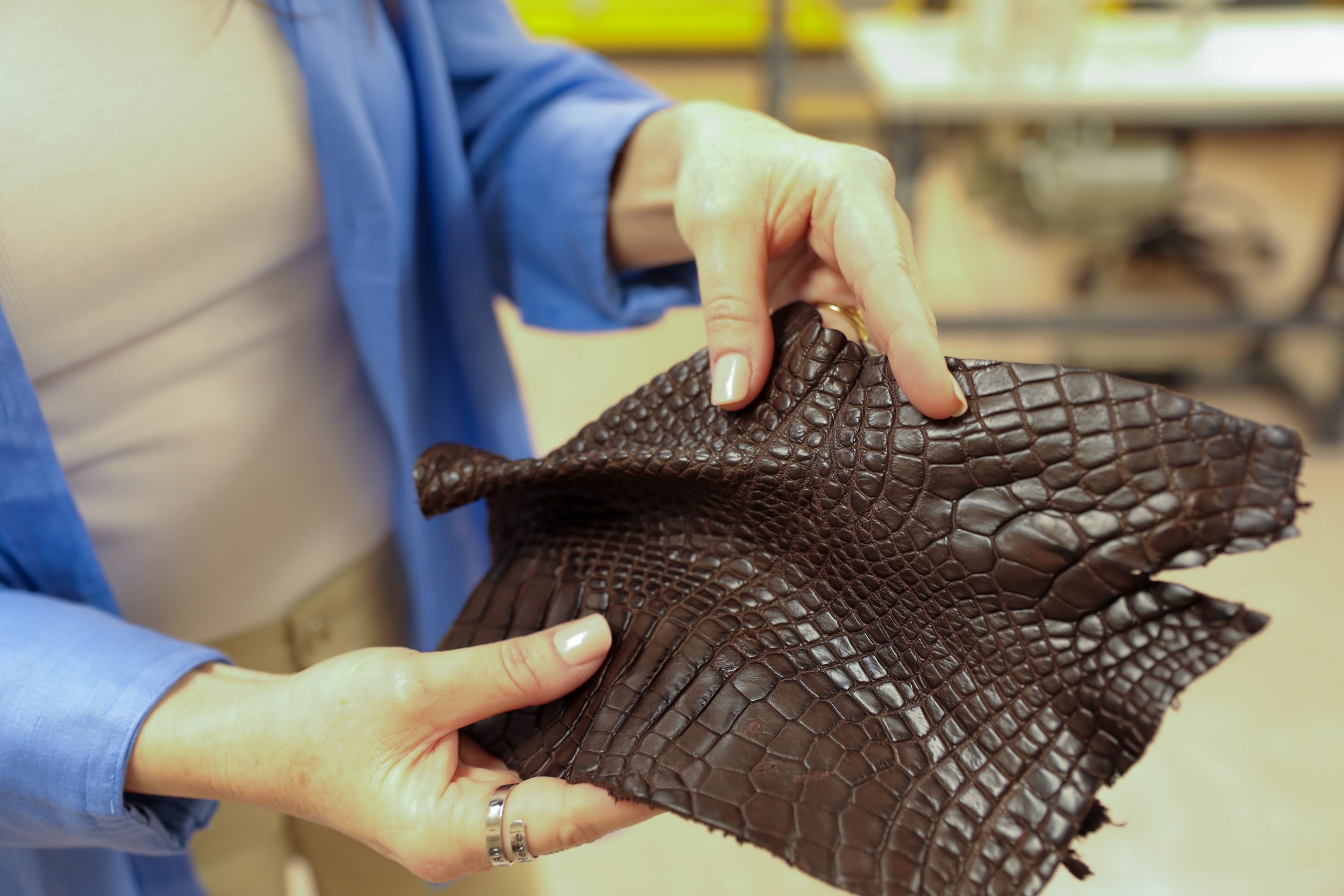
E.D. White Cardinals win state championship over Vandebilt Catholic
May 13, 2023
City of Thibodaux receives 10 trash receptacles through Keep Louisiana Beautiful Grant to Prevent Litter in Thibodaux Parks
May 14, 2023Susan Lindrew, a senior majoring in textiles, apparel and merchandising, has been working on a research project on experimental patternmaking to use the typically discarded portions of alligator hides in fashion.
LSU Department of Textiles, Apparel Design and Merchandising faculty member Casey Stannard is her advisor for the project. Their research explores experimental patternmaking techniques that could help reduce waste and give a purpose to the underutilized leather that would typically end up on the cutting room floor.

Lindrew demonstrates how the alligator hide has a natural three-dimensional shape that creates a unique drape. Photo by Annabelle Lang/LSU College of Agriculture
“Fashion as an industry has a huge impact on the environment. It is important to find ways to reduce waste and to utilize materials in an ethical and sustainable manner,” Stannard said. “This research project is just one step in that direction, and I’m excited to see what else we can achieve in the future.”
Traditional fashion and patternmaking approaches often start with flat fabric and patterns, which work well except for three-dimensional textiles like alligator hides. The flat belly section of the hide is the most prized section used by designers, while rounded parts, like the legs, are often discarded.
“I was aware of zero waste but had never had the time or an opportunity to try it,” Lindrew said. “Participating in the research project gave me an opportunity to experience and try these things, and it was very rewarding.”
The team explored three experimental patternmaking techniques to achieve avant-garde, or new and experimental ideas, for the use of the hides. Lindrew demonstrated how a three-dimensional piece of hide could be used to create a ruffle on a sleeve.
Lindrew shared her own thoughts on the project’s potential impact.
“I think this research could have a significant impact on the fashion industry. It could potentially reduce waste and change the way we think about patternmaking and design. It’s exciting to be a part of something that could make a difference,” Lindrew said.
The research project’s success demonstrates the potential for sustainable fashion practices to make a difference. Lindrew and Stannard have taken an important step towards reducing waste and changing the way designers think about patternmaking.
The LSU College of Agriculture undergraduate research grant program funded Lindrew’s research project. Through hands-on involvement with undergraduate research, Lindrew has learned design techniques that she never knew existed.
The project’s success was demonstrated by its reception at the LSU Undergraduate Research Conference, where Lindrew and Stannard presented their research. The project poster won the “Best in Show” award for the textiles, apparel and merchandising division. The three designs also will be submitted to an international juried design exhibit later this summer.







